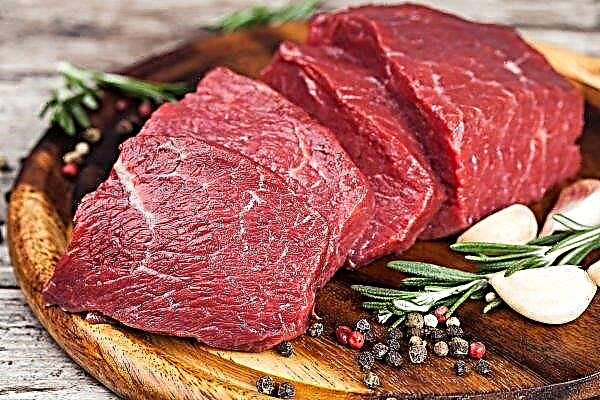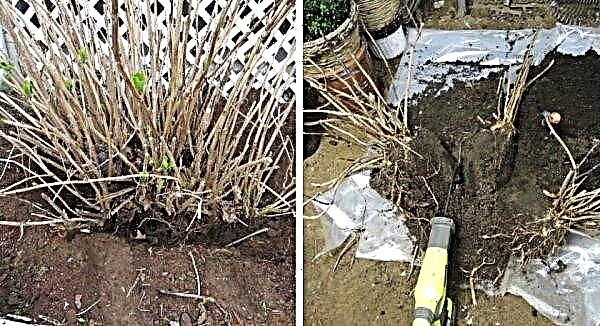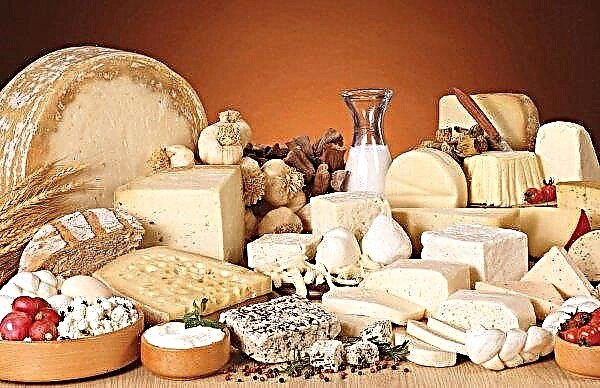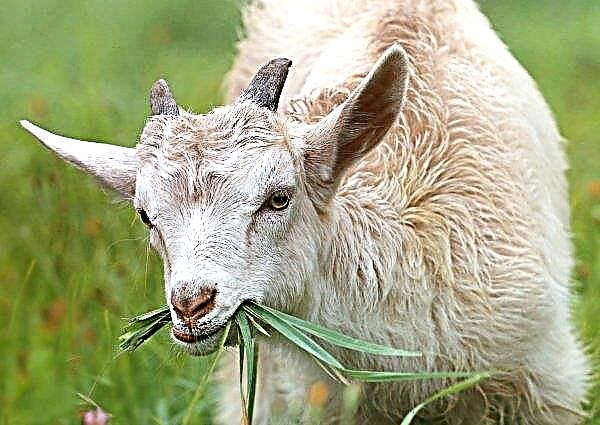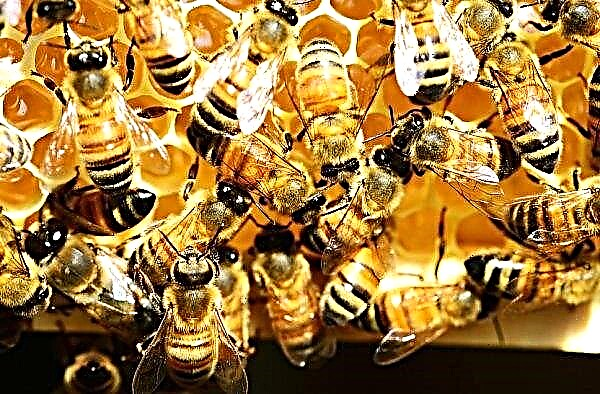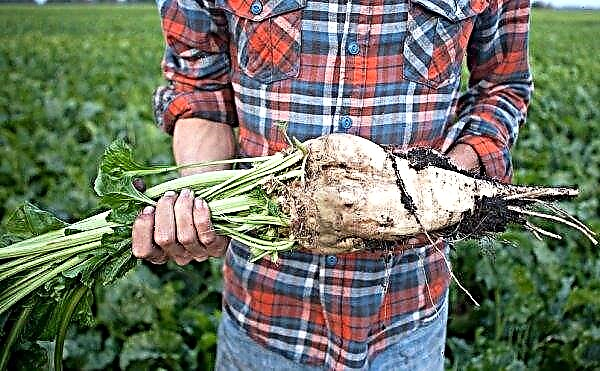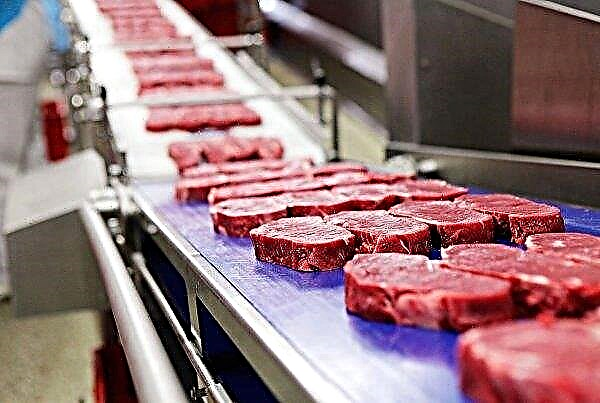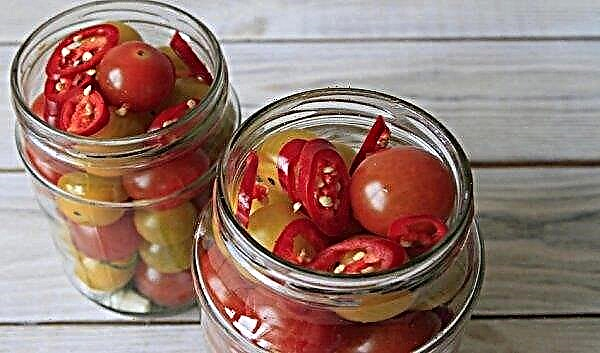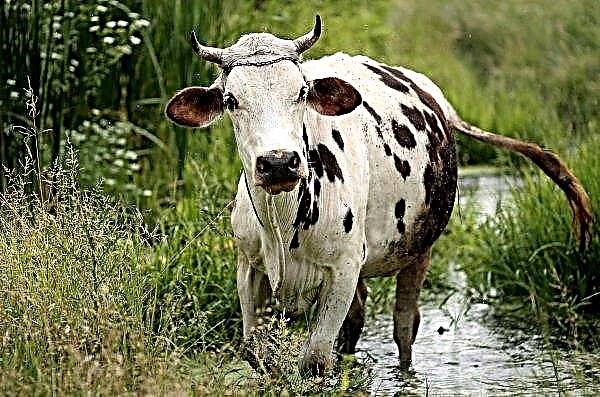Onions have their own planting characteristics. Violation of the rules of agricultural technology leads to a decrease in productivity and production of products. When and how to plant onions in open ground, as well as the rules for harvesting and storing it will be discussed below.
The best varieties suitable for planting
Onions are represented by a huge number of varieties, which are divided according to severity into:
- sharp
- peninsular;
- sweet.
The severity of the product depends on the content of essential oils in its composition. An increase in the content of esters is observed with insufficiently good soil moisture. Almost all varieties are well established in any region. The only exceptions are heat-loving exotic species.
Important! For planting, only small heads of sets are suitable, not exceeding 3 cm in diameter.
When planted in the middle lane and northern regions, crop yields and taste characteristics may suffer. Such products will be suitable for use in their own needs, but problems may arise with implementation. Based on this, it is best to give preference to planting material obtained in a particular region.
The following universal varieties are very popular:
- Danilovsky 301 - mid-ripening culture ripening in 100-120 days. Forms one, occasionally 2 roundly flat bulbs of large sizes. The density of the pulp is medium, the taste is peninsular. The weight of one fruit is an average of 150 g. Juicy scales are light lilac or light purple, dry - dark red with a purple tint. Keeping speed is 80%. Productivity - 3 kg / m².

- Red baron - mid-ripening variety, ripening in 120 days. Differs in unpretentiousness in leaving and gives high productivity even in arid conditions - 3 kg / m². Bulbs of red-violet color have a rounded shape. They weigh from 50 to 120 g. The taste of the flesh is semi-sharp. Keeping speed is 90%.

- Hercules - An early culture ripening in 70–80 days. It is highly appreciated for its good adaptive qualities, disease resistance and productivity (8 kg / m²). Bulbs are large, round-oval, covered with a dense golden peel. The weight of one specimen can vary between 120–160 g. The pulp is juicy, sharp, without bitterness. Keeping quality is 90%.

- Bonus - medium early culture, ripening in 100 days. Productivity with m² is 6–9 kg. Adaptive qualities are excellent. The bulbs are even, covered with a dense golden peel. The pulp is white, juicy, sharp. Keeping quality is 90%.

- Stuttgart Riesen - ripens in 120 days when sowing seeds. The variety is resistant to cold. Bulbs are rounded, slightly flattened, covered with a golden peel. The weight of the bulbs depends on the growing conditions and can vary between 120–200 g. The yield is 3.5–5 kg / m². Keeping high.

Preparing for landing
Before sowing onions, you need to determine the timing, as well as prepare the soil and seed. Before planting, onion sets are kept for 15–20 days at a temperature of +18 ... + 25 ° С. After this period, the heads can withstand 6-8 hours at a temperature of +30 ... + 40 ° C. Preplanting warming helps to trigger growth processes, and is also an effective prevention of early shooting.
2 hours before planting should be treated with Fitosporin. 10 g of powder are added to 500 ml of room temperature water. With this composition, you need to spray the bulbs, laid out in one layer in a box. This amount is enough to handle 20 kg of planting material.
The onions prepared for planting can be treated with a solution of manganese - 1 g of powder is added to 1 liter of boiling water and cooled to a temperature of + 30 ° C. After disinfection, the planting material must be dried in the sun for 2 hours.
Did you know? In the Middle Ages, onion was one of the essential products in the crusader's food supply.
When to plant
When is it better to plant onions, depends on the cold resistance of a particular variety and region of cultivation:
- in the southern regions - since March 17;
- in the central regions - since April 20;
- in the northern regions - from May 7.
How to prepare the ground
Onions grow well on fertile, slightly acidic soils. Site preparation begins in the fall, after harvesting. When planting onions, it is important to follow crop rotation rules. In the same place it can not be planted for 3 years.
It is better to set aside for its landing the area on which they had previously grown:
- cucumbers
- cabbage;
- Tomatoes
- the beans.
Immediately after harvesting, it is necessary to thoroughly clean the soil from plant debris. After that, conduct a deep digging of the soil on the bayonet of a shovel. Next, soil disinfection is carried out with the help of Fitosporin. 5 g of powder is added to 10 l of water and the soil is irrigated. This amount is enough for irrigation of 1 m². After 2 weeks, the soil should be fertilized. For each m²:
- 10 kg of manure;
- 30 g of superphosphate;
- 15 g of potassium chloride.
Did you know? Onions in ancient times was an expensive crop. During the war with the Saracens, the French exchanged their prisoners from enemies, paying with onions - 8 root crops for 1 person.
After fertilizing, plowing is again carried out on the bayonet of a shovel. Clods of earth do not need to be broken. This will provide air access to deeper layers of the soil and reduce the likelihood of spreading fungal infections and pests. In the spring, about 2 weeks before planting, you need to dig again to a depth of 20 cm.
If the soil moisture is normal, within 70%, then the soil is treated with wood ash in dry form at 500 g per m². If the winter was not snowy and the soil was dry, then you need to irrigate with a solution of wood ash. 500 g of ash are added to 10 liters of water and this amount of solution is added for each m². After processing, the land is leveled. On the day of planting on the site make furrows at a distance of 30 cm from each other and plant onion sets in them. The depth at which the biomaterial is planted depends on the density of the soil, and on what ambient temperature the planting is carried out. On light soils, the planting depth is 4 cm in increments between bulbs 5-10 cm.
On the day of planting on the site make furrows at a distance of 30 cm from each other and plant onion sets in them. The depth at which the biomaterial is planted depends on the density of the soil, and on what ambient temperature the planting is carried out. On light soils, the planting depth is 4 cm in increments between bulbs 5-10 cm.
On heavy soils, the planting depth is 2 cm with a similar pitch. At an air temperature of + 15 ° С, the planting depth for light and heavy soil will be the same - 3 cm, with a risk of return frosts and air temperature + 10 ° С and below, the planting depth is 5 cm, and it is advisable to cover the crops with film before germination.
Features of care for sevk
Caring for a bow is pretty easy. This culture is not too demanding. The main agricultural activities carried out onion beds:
- watering;
- fertilizer application;
- pest prevention and control.
Important! After each irrigation and rain, after 12 hours, loosening of the soil in the aisles with parallel removal of weeds is mandatory. This allows you to increase productivity and protect plants from diseases.
Watering
Onion turnip is not too picky about watering. If the weather is rainy, then you can completely abandon this manipulation. In the spring, watering is usually not carried out, most often it is required in the summer, especially if the weather is hot and arid. In such cases, watering is carried out once a week. Water is not brought in at the root, but in the aisles at the rate of 35 liters per m². All manipulations with soil moisture are carried out only in the morning or in the evening.
Watering can be carried out using:
- tape drip system;
- hose connected to a low pressure pump.
 In the first 3-4 weeks, the soil should be moistened to a depth of 12 cm. Based on this indicator, they decide whether to irrigate or not. After the formation of the bulbs, the soil should be moistened 20 cm in depth. When the foliage begins to lie down, that is, a month before harvesting, watering is stopped completely.
In the first 3-4 weeks, the soil should be moistened to a depth of 12 cm. Based on this indicator, they decide whether to irrigate or not. After the formation of the bulbs, the soil should be moistened 20 cm in depth. When the foliage begins to lie down, that is, a month before harvesting, watering is stopped completely.Fertilizer
If the soil was qualitatively cultivated at the time of preparation in the fall and spring, then onion fertilizers are not required. Evidence that plants need top dressing will be a weak growth of greenery after emergence. In this case, it is possible to fertilize with compost - 1 kg per m² is closed up in the aisles. The following dressing is carried out after 2-3 weeks.
Did you know? In ancient Greece, onions were mainly used as a medicine. It was considered the food of commoners because of the sharp pungent aroma.
To do this, you can use a solution of wood ash (200 g / 10 l of water) or a yeast solution. To prepare a yeast solution in 10 l of water, 50 g of yeast is dissolved and 1 tbsp. l Sahara. The composition is insisted for a day and watering the aisles or spraying on the sheet.
Pest and Disease Control
With increased humidity, onion plantings can be affected by the following diseases:
In the presence of fungal diseases, it is better to remove the affected plants from the site and conduct treatment with wood ash in combination with Fundazol 1: 1. In parallel with these manipulations, you need to try to restore normal soil moisture:
- watering cancel;
- to carry out the deepest loosening of row spacing;
- if necessary, add 5 kg of sand per m² to the beds.
Of the pests for onions are dangerous:
How to collect and store onions
For the most part, the safety of the crop depends on what day it was harvested. The weather on the street should be warm, dry, sunny. If it rains for a long time, then you need to wait for the soil to dry out (at least 3 days). Dig the onions carefully, being careful not to damage the fruits. Then they collect it in sheaves and hang it in a dry dark room in a draft for a couple of days. After this manipulation, the tops and too long roots are cut. Conduct sorting.
Onions can be stored at temperatures from -1 ° C to + 20 ° C. It is important not to allow temperature fluctuations, so you should choose in advance the optimal place in which the temperature indicator will be kept at the same level. The ideal option is a basement or a glazed balcony. Humidity throughout the entire storage period should be kept within 65–75%.
Did you know? Onions are an excellent substitute for citrus in terms of antioxidants, which will be useful for people allergic to citrus.
To store onions, you can use:
- plastic and wooden containers with a sufficient number of openings to ensure the influx of fresh air;
- in nets suspended at a height of 40 cm from the floor.

Some tips from experienced gardeners to help keep the crop:
- If it is necessary to make fertilizers, then this should be done before the onion formation begins. This is especially true for nitrogen compounds, otherwise the percentage of keeping quality will decrease.
- More often loosen aisles - this will facilitate the work when digging a crop.
- If you had to collect onions in wet weather, then the drying period before laying it for storage should be increased to 7 days.
- The onions stored for storage should be periodically checked for rot and sifted out spoiled specimens.
An important role in preserving the onion crop is played by the observance of elementary agricultural practices. When they are performed, the crop is stored from the time of collection to the next planting without loss.







